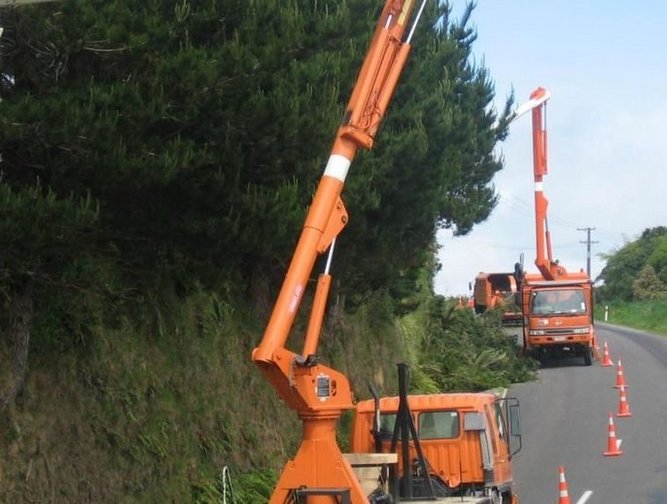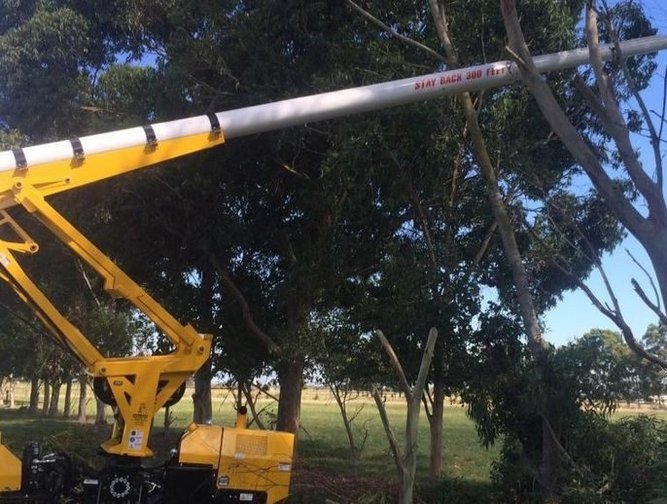
Asplundh
Wielding a cutting device right next to a power line is just the sort of dangerous activity that calls for an experienced hand – and they don’t come more experienced than Asplundh New Zealand. It’s part of the US-based, family-owned Asplundh Tree Expert Co., which has been providing vegetation management since its founders started trimming trees away from power lines and telephone wires in Philadelphia in 1929. Asplundh has been providing a vegetation management services for New Zealand utilities for 27 years.
This long pedigree doesn’t allow for any complacency, though. “It’s very competitive,” says Managing Director Kevin Burt. With 29 utility networks servicing only 4.5 million people, and some of the networks providing their own services in-house, Asplundh can’t rest on its laurels. “We have to be more than just a cutting company to our clients,” says Burt.
To stand out from the crowd in such a competitive environment, it helps to have the backing of a global enterprise. “One of our USPs is the ability to deliver a higher level of capability,” says Burt. “We have access to technology, we have access to systems and we have access to equipment which generally may not be cost effective for smaller operators or networks.”
Equipment, that is, like the Jarraff and Mini-Jarraff – a fully insulated mechanical line-trimmer which allows the operators to remain on the ground or in a protective cabin, at a safe distance from the power line.
The Jarraff makes the business of cutting trees next to power lines significantly safer. “Unfortunately we’ll never get to the point of removing the physical aspect of men and equipment needing to be in close proximity to the power line but over time, as the vegetation management regimes improve here in New Zealand, those tools and devices will have a much greater impact.”
Investment in equipment like the Jarraff reflects Asplundh’s commitment to safety. “Safety first, no one gets hurt” is the company’s slogan and mission statement, and according to Burt they are not just empty words.
“We work in an extremely high risk environment and everything I do as a managing director and everything I challenge our staff to deliver is very much driven by that [mission statement].”
State-of-the-art equipment isn’t the sole answer to safety, of course; without good operators the best equipment, it is worthless. “We take the qualifications, skill and competency of our staff very, very seriously,” says Burt. “We empower them to be out there operating independently and we need to make sure they’re not only technically proficient in what they’re doing but trained in the soft skills to be able to make smart decisions on the ground.”
Asplundh has its own warranting system for its staff and works with the industry to improve standards. “We’re about whole, industry-wide safety and actively participating in utility working groups to share that information,” says Burt.
Small wonder, then, that when new health and safety legislation came in this year, Asplundh was barely affected. “We have a history and culture of exceeding the legislation, so for us it was a very easy transition.”
What Burt has seen changing is the client’s role in setting and enforcing health and safety standards. “Our clients are stepping up. They are understanding their vital role in health and safety and understanding the first principle that we have to take reasonable steps to ensure any risk to our employees is mitigated. The thinking is changing for the positive, I believe.”
Asplundh singles itself out further with a vegetation asset management system, known as VAMS, which Burt championed when he arrived at the company. A former officer in the military, and armed with a degree in IT, he asked himself how the business could add value in a tight market with agile competitors.
“How do you do that when your main function is cutting trees next to power lines? Well, you get into the mindset of doing that smarter, sharper, safer. In our space that’s gaining vegetation intelligence and delivering a better outcome,” he says. “To reduce our client’s network vegetation risk and deliver industry leading productivity, we capture the vegetation and cutting data, and effectively analyse it to ensure our programs see us sending the right people to the right job for the right outcome at the right time.”
VAMS allows the business to think strategically, looking ahead to a 5-10 or even longer cycle. “Vegetation is not going to go away,” says Burt. “We have to make sure we’re not thinking short term and just going around doing the same old thing year on year.”
So successful has VAMS been that it is now being rolled out across the US. Burt is understandably gratified. “The satisfaction is driven primarily because of the skill and ability of my staff here in New Zealand who have been real leaders of the development, who have taken the time and effort to see the vision. It’s hard to test and trial and update while running business as usual, so system development is never a smooth process, but if people see the vision and the benefits that it can deliver they’ll push hard for it.”
Utility vegetation management isn’t the only service Asplundh offers; over the years it has diversified. “To stay in a small marketplace we have to look at other revenue streams,” says Burt. A significant percentage of the business is open space management which includes services such as the maintenance of sports fields and parks, mowing, gardening and even burial and sexton services.
As for the future of Asplundh New Zealand, the main aim is to continue with what they are doing, only better. “I think there’s strong benefit in focusing on what we’re currently doing and doing it better and delivering better value for money to our clients,” says Burt.
Keeping pace with rapidly-changing technology is key to this. Burt is excited by the potential of LiDAR (light detecting and ranging) – laser scanning technology that is being introduced into vegetation management to capture vegetation data around distribution and transmission lines to identify areas with clearance issues. “When harnessed correctly it is a powerful tool,” he says.
He foresees an increasingly collaborative approach to vegetation management, with an online portal where members of the public can report issues and learn about risks. “They can start to take ownership.”
Whatever the technology may be, Burt is positive about the next few years. “I think the future looks bright,” he says. “It’s going to be exciting to evolve the business and see how the industry evolves over the next three to five years.”





